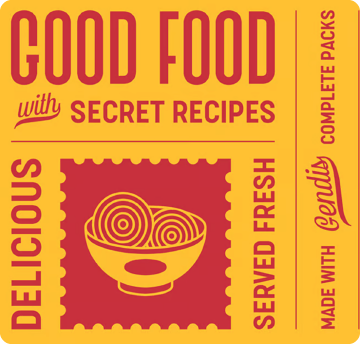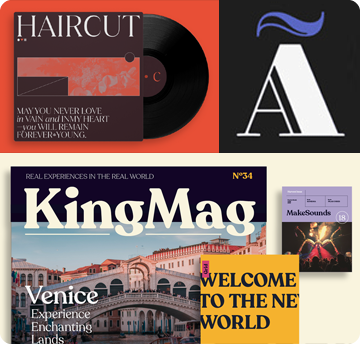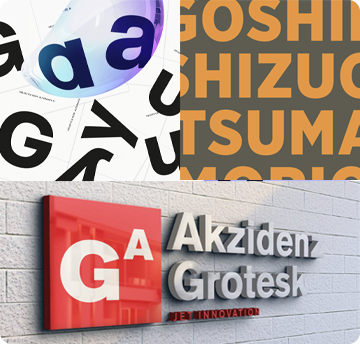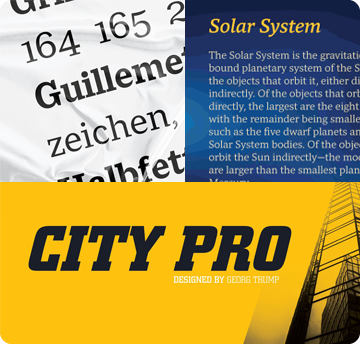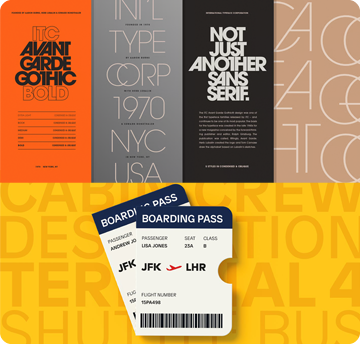Discover legacy content from FontShop.com, preserved for your reference.
Fonts with Most Language Support
Plan for a global readership — get professional fonts with the broadest language support. These OpenType fonts contain the most extensive character sets for supporting multiple languages beyond those of Western Europe. All the fonts in this list contain Western, Central/Eastern European, Turkish, Cyrillic, and Greek character sets, and some offer even more language support, such as Hebrew and Arabic.
[image]
Learn about the differences between OpenType Std and Pro »
Learn more about OpenType FontFonts and the languages they support »
On the way back to the airport from the 1994 ATypI conference in San Francisco, Albert-Jan Pool and Erik Spiekermann discussed Pool’s prospects, Spiekermann knowing that his friend’s employer had just gone out of business. He suggested that if Pool wanted to make some money in type design, that he take a closer... Read More
The family that became FF Meta was first called PT55, an economical typeface made for easy reading at small sizes created for the West German Post Office in 1985. Erik Spiekermann later improved and expanded his design to include more weights and styles, and prepared its release as FF Meta, one of the first and truly foundational members of the early FontFont library. As desktop publishing... Read More
The aim with this enhancement of Hans Reichel’s mega-popular FF Dax typeface was to balance the contrast so that the letters would work better in long texts at small point sizes. FF Daxline is wider than its predecessor, and the capitals are larger. There is even a lighter version than light: thin. The result is a much more consistent, versatile family without abandoning the distinctive... Read More
FF Celeste is a typeface for designers who like the idea of a Bodoni or Walbaum, but look for a robust and readable text face which tempers the sobriety of romance type with friendlier Renaissance-era features. The serifs tend to the triangular and the italics harmonize well with the roman in tone and width. The letterforms are less rationalized and modular than the starkest modern faces, but... Read More
In 1983, D. Stempel AG redesigned the famous Helvetica typeface for the digital age, creating Neue Helvetica for Linotype: a self-contained font family. Today, this family consists of 51 different font weights. It’s original numbering system for the weight designations came from Adrian Frutiger’s numbering system for the Univers family. The basic font weight, “Neue Helvetica Roman”, is at the... Read More
Myriad® was designed in 1992 by Robert Slimbach, Carol Twombly, and the design staff at Adobe Systems. It's a humanist sans serif typeface, meaning that the forms are primarily based on classic romans, much like conventional or classic serifed fonts but without the serifs. Myriad also has subtle geometric shaping and monotone color, balanced by varying letter widths and open counter shapes. A... Read More
In designing Minion font, Robert Slimbach was inspired by the timeless beauty of the fonts of the late Renaissance. Minion was created primarily as a traditional text font but adapts well to today's digital technology, presenting the richness of the late baroque forms within modern text formats. This clear, balanced font is suitable for almost any use.
Claude Garamond (ca. 1480-1561) cut types for the Parisian scholar-printer Robert Estienne in the first part of the sixteenth century, basing his romans on the types cut by Francesco Griffo for Venetian printer Aldus Manutius in 1495. Garamond refined his romans in later versions, adding his own concepts as he developed his skills as a punchcutter. After his death in 1561, the Garamond punches... Read More
Really No. 2 is a redesign and update of Linotype Really, a typeface that Gary Munch first designed in 1999. The new Really No. 2 offers seven weights (Light to Extra Bold), each with an Italic companion. Additionally, Really No. 2 offers significantly expanded language support possibilities. Customers may choose the Really No. 2 W1G fonts, which support a character set that will cover Greek... Read More
Linotype Bariton is part of the Take Type Library, chosen from contestants of Linotype's International Digital Type Design Contests of 1994 and 1997. Designer Alexei Chekulayev designed his font in one weight to mirror the Zeitgeist of the early 1930s. The characters of this extremely bold font are based on the form of a rectangle though its rounded edges soften its look a bit. Linotype... Read More






